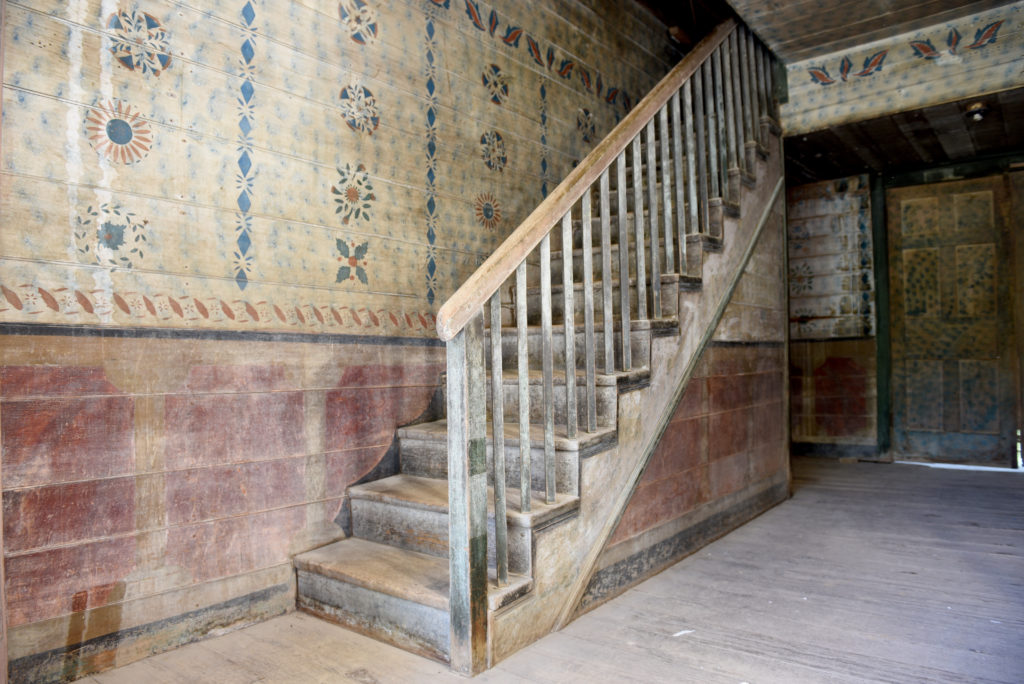The home was originally constructed as a 1 1/2 story dogtrot log house, but was soon extensively renovated. The walls were covered on the exterior with beaded poplar siding and the inside was modified to include a variety of wall coverings and decorative painting. The level of workmanship exhibited in the structure is remarkable, representing the finest in wood craftsmanship. Luckily, most of the home’s historic architectural features have remained intact due to the absence of modernization which so often negatively impacts such structures.
The home is most noted for its interior stencil painting, representing one of the most extensive examples of this style interior decorative painting known in the region. Stencil painting found in the home is of the style of Moses Eaton, Jr., a very popular itinerant painter during the early 19th century from Dublin, New Hampshire. It is unlikely, however, that Eaton produced the painting himself. More likely an itinerant painter utilizing stencils inspired by Eaton created the work. The fact that such a decorative application was utilized in a middle-class rural farmhouse is in itself an anomaly, one made more special by the fact that it has survived for over 180 years!

